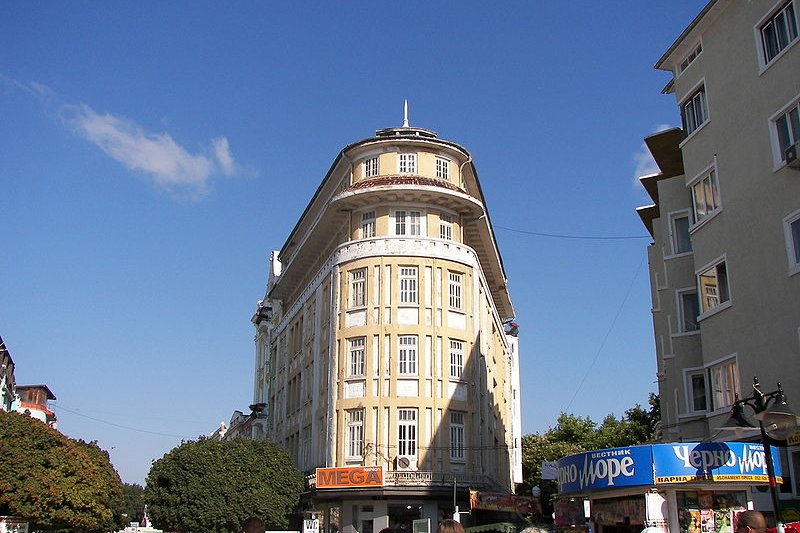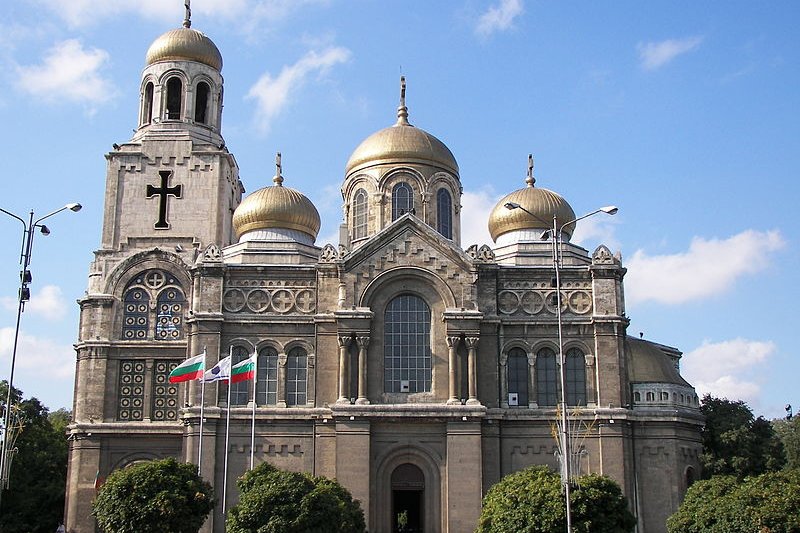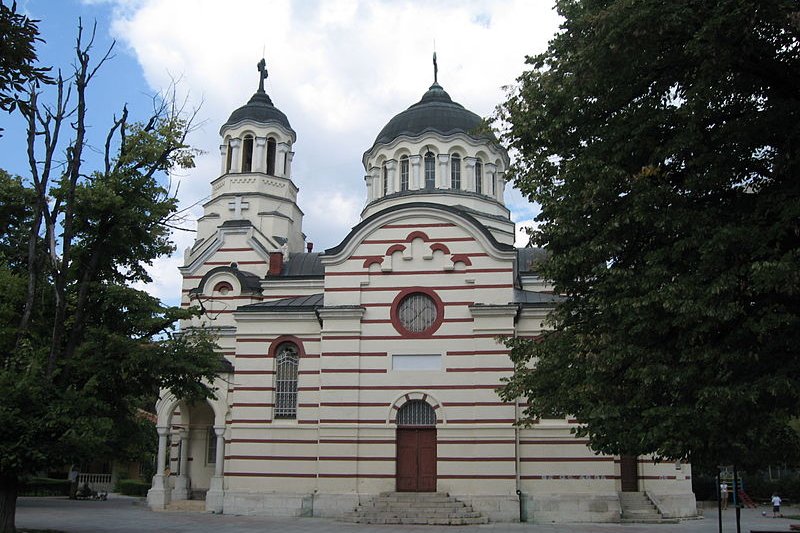 Varna, Bulgaria
Varna, BulgariaSource: https://commons.wikimedia.org/wiki/File:Bulgaria-Varna-04.JPG
Author: Infobgv

Varna (Bulgarian: Варна) is the third most populous city in Bulgaria. It is also the biggest city on the Bulgarian Black Sea Coast. The city is today a major seaside resort town. It covers 238 sq km (91.9 sq mi) and has a population of 335,000 people (2011 estimate).
Often regarded as the summer capital of Bulgaria, Varna is home to the Bulgarian navy and seat of the Council of Europe's Black Sea Euro-Region. The city sits on the horseshoe-shaped Varna Bay facing the Black Sea to the east and Lake Varna to the west. These two bodies of water are connected by two man-made canals.
Varna experiences the humid subtropical climate with influences from the maritime and continental climates. Winters here are cold but generally warmer than places further inland. August is the hottest month in Varna, when the average high temperature rises to 30.2°C (86.4°F). January is the coldest month, when average low temperature drops to -1.1°C (30°F). The wettest month in Varna is October, which receives 70.1 mm (2.76 in) of precipitation.
 Varna Drama Theater
Varna Drama TheaterSource: https://commons.wikimedia.org/wiki/File:Varna-drama-theatre-ngruev.JPG
Author: Nikola Gruev

Earliest artifacts uncovered in the area around Varna dates back to the Middle Paleolithic period, which is some 100,000 years ago. By 1000 BC, Thracian tribes have made permanent settlements in the area. There was continuous habitation of the area from the 7th to the 4th century BC.
Varna was first mentioned in the 6th century, when the area was inhabited by Slavic tribes. There are possibilities that the First Bulgarian Empire may have had its capital in the vicinity. Rule over the area switched between the Bulgarian and the Byzantine several times during the Middle Ages. In the 10th century, Varna was the site of the Preslav Literary School, which was instrumental in introducing Cyrillic alphabet to the Bulgarian language.
 Dormition of the Theotokos Cathedral, Varna
Dormition of the Theotokos Cathedral, VarnaSource: https://commons.wikimedia.org/wiki/File:Bulgaria-Varna-02.JPG
Author: Infobgv

By the 14th century, Varna had grown to become one of the most important seaports between Constantinople and the Danube delta. In 1444, the Turks pushed back the Christian army in the Battle of Varna. This led to the eventual fall of Constantinople in 1453, ushering in Ottoman rule that was to last some four centuries, only to end in 1878, when the city was ceded to Bulgaria.
Today Varna is a modern city with an economy based on trade and tourism, along with manufacturing, transportation and construction.
Visiting Varna
Varna Airport (VAR) receives flights from Sofia, Burgas, London-Luton and Vienna. Many more airlines provide seasonal chartered flights to major cities in Europe. You can also take a train to Varna from Sofia, Plovdiv and Rousse. There are also trains from Kiev, Lviv and Bucharest. During summer, you can also get trains from Moscow, Saint Petersburg, Minsk, Prague and Warsaw. Church of Sveta Petka, Varna
Church of Sveta Petka, VarnaSource: https://commons.wikimedia.org/wiki/File:Die_kirche_sveta_petka.jpg
Author: Dimitar Ivanov

Places of Interest in Varna
- Archaeological Museum
A vast museum established in 1888 and today holding some 100,000 ancient artifacts. The collection is spread over forty rooms on two levels. - Armenian Church
This church for the Armenian community in Varna was built in 1842. It has a monument remembering the Armenians who were massacred by Ottomans in 1894. - Cathedral of the Assumption
This is the second biggest church in Bulgaria after the Alexander Nevski Memorial Church of Sofia. It was built in 1886 to commemorate the Russian soldiers who died fighting for Bulgarian liberation from Ottoman rule. - Church of Sveti Atanas
Located next to the Roman Thermae, this church is renowned for its highly ornamented interior, which is decorated with iconostatis. - Church of the Assumption
This tiny church, built in 1602 during Ottoman period, was set below ground level, so that it is lower than a man on horseback - a requirement to present churches from outshining mosques. It houses the oldest religious icon in Varna, a 13th century depiction of the Madonna. - City Art Gallery
Gallery displaying the works of famous Bulgarian and international artists, and often hosting art exhibitions. - City History Museum
One of the oldest surviving houses in Varna, the former Belgian consulate today houses the museum that celebrates the history of Varna from the late 18th century to present-day. - Ethnographic Museum
Museum housed in an imposing 19th century house of the National Revival style. It is one of the biggest ethnographic museums in Bulgaria, with displays ranging from farming tools to traditional costumes. - Evksinograd Palace
Palace of Prince Aleksandûr Batenberg I completed in 1886. The palace is well maintained and is surrounded by a manicured garden. - Museum of Medical History
This museum displays in all too graphic detail its macabre collection of skulls and skeletons, with a peek at mysterius practices, such as the deliberate deforming of skulls. - Navy Museum
Museum showcasing the navigation history of Bulgaria, centering around its Black Sea fleet. On the museum grounds is the Druzhki tropedo boat that sank a large Turkish cruise ship. - Roman Thermae
This is the Roman public bath, now in ruins. It provides a glimpse into Roman civil engineering and bathing habits. - Sea Gardens
Urban park with many attractions including the Aquarium, the Planetarium, the Zoo, the Terrarium and the Dolphinarium.
 Latest updates on Penang Travel Tips
Latest updates on Penang Travel Tips

Copyright © 2003-2025 Timothy Tye. All Rights Reserved.

 Go Back
Go Back